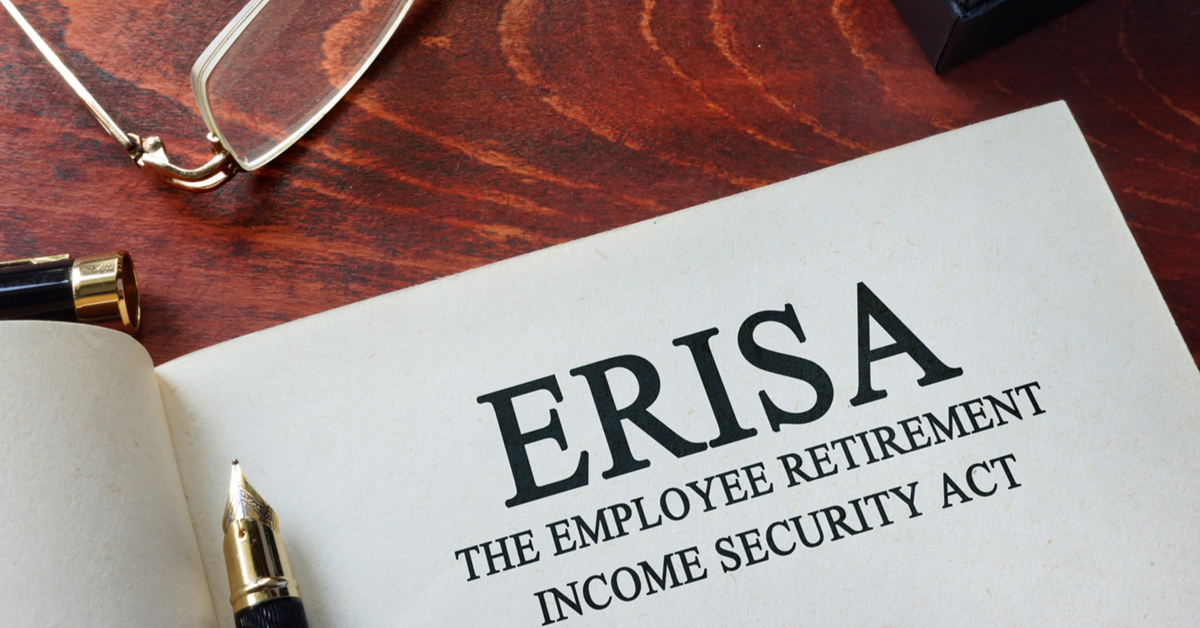
Q: How do you know if a client’s health insurance is through an ERISA (Employee Retirement Income Security Act of 1974) Plan and when might an ERISA lien arise? How do I know the plan is truly an ERISA plan or if the plan/recovery contractor is just claiming ERISA?
A: An ERISA lien may arise when the injured party was a direct beneficiary of an employer health insurance or health benefit plan. If Benefits are paid through the employer, then it is ERISA, with certain exceptions. The injured party may be the employee themselves or a beneficiary of the plan, in the form of a partner or dependent of the employee.
However, it is the distinction between self-funded ERISA plans and those that are insured ERISA plans that significant, as this is the critical factor in the determination of whether the plan language preempts state law.
Self-funded plans are often created by large employers that are better able to fund a group health and pension plan. The employer uses its own assets, usually in combination with contributions from the employees, to fund the plan. Using this method of funding the plan, the employer bears the risk of loss should the need for benefits to be paid occur. Often, in this scenario, a company that you would normally associate with being a commercial insurance company simply acts as a claims administrator, bearing no risk for payment of benefits, but negotiates with provider, processes claims, and manages the fund out of which benefits are paid.
By contrast, an insured ERISA plan is one where the employer purchases insurance from a commercial insurer to cover the risk of loss should any benefits be paid out. Here, the employer (and employee through a contribution) pay a premium to the commercial insurance company, which then completely exposed to the risk for payment of benefits.
The employer’s form 5550 might shed some light on the type of plan in place. The form 5550 is an annual report about the funding, administration, and participation of the plan, which is required to be annually submitted to the U.S. Department of Labor. The “plan funding arrangement” should be noted, and contain a “Schedule A” for every insurance contract which is associated with the plan. The information contained therein may be useful in determining whether a health plan is self-funded, either through a trust or the employer’s general assets, or by insurance. You may be able to access this form through the U.S. Dept. of Labor website.
However, the only true way to determine whether or nota plan is an insured or a self-funded plan and exactly what the plan is entitled to in the form of reimbursement, is to review all available documents relating to the plan, including but not limited to:
- Plan Document;
- Amendments to the Plan;
- Summary Plan Description;
- Form 5550;
- Trust Agreement; and any other relevant documentation.
The best way to get copies of these documents is to have your client (or the beneficiary of the plan) write a letter to the plan administrator requesting this documentation. The letter should be sent to the plan administrator USPS Certified Mail with return receipt requested.
ERISA requires certain documents to be furnished to the plan member upon written request to the designated plan administrator. 29 U.S.C. §1024(b)(4). Failure by the plan administrator to furnish the requested documents within 30 days of receipt of the request can result in a penalty of $110.00 per day that the administrator is in breach. 29 U.S.C. §1132(c)(1) and 29 CFR §2575.502c-1.
ERISA’s express preemption statute consists of three parts, typically called the preemption clause, the savings clause, and the deemer clause:
1. The Preemption Clause:
Except as provided in subsection (b) of this section, the provisions of [ERISA] shall supersede any and allState laws insofar as they may now or hereafter relate to any employee benefit plan described in section 1003(a) of this title and not exempt under section 1003(b) of this title.
29 U.S.C. §1144(a)
2. The Savings Clause:
Except as provided in subparagraph (B), nothing in this subchapter shall be construed to exempt or relieve any person from any law of any State which regulates insurance, banking, or securities.
29 U.S.C. §1144(b)(2)(A)
3. The Deemer Clause:
Neither an employee benefit plan described in section 1003(a) of this title, which is not exempt under section 1003(b) of this title (other than a plan established primarily for the purpose of providing death benefits), nor any trust established under such a plan, shall be deemed to be an insurance company or other insurer, bank, trust company, or investment company or to be engaged in the business of insurance or banking for purposes of any law of any State purporting to regulate insurance companies, insurance contracts, banks, trust companies, or investment companies.
29 U.S.C. 1144(b)(2)(B)

